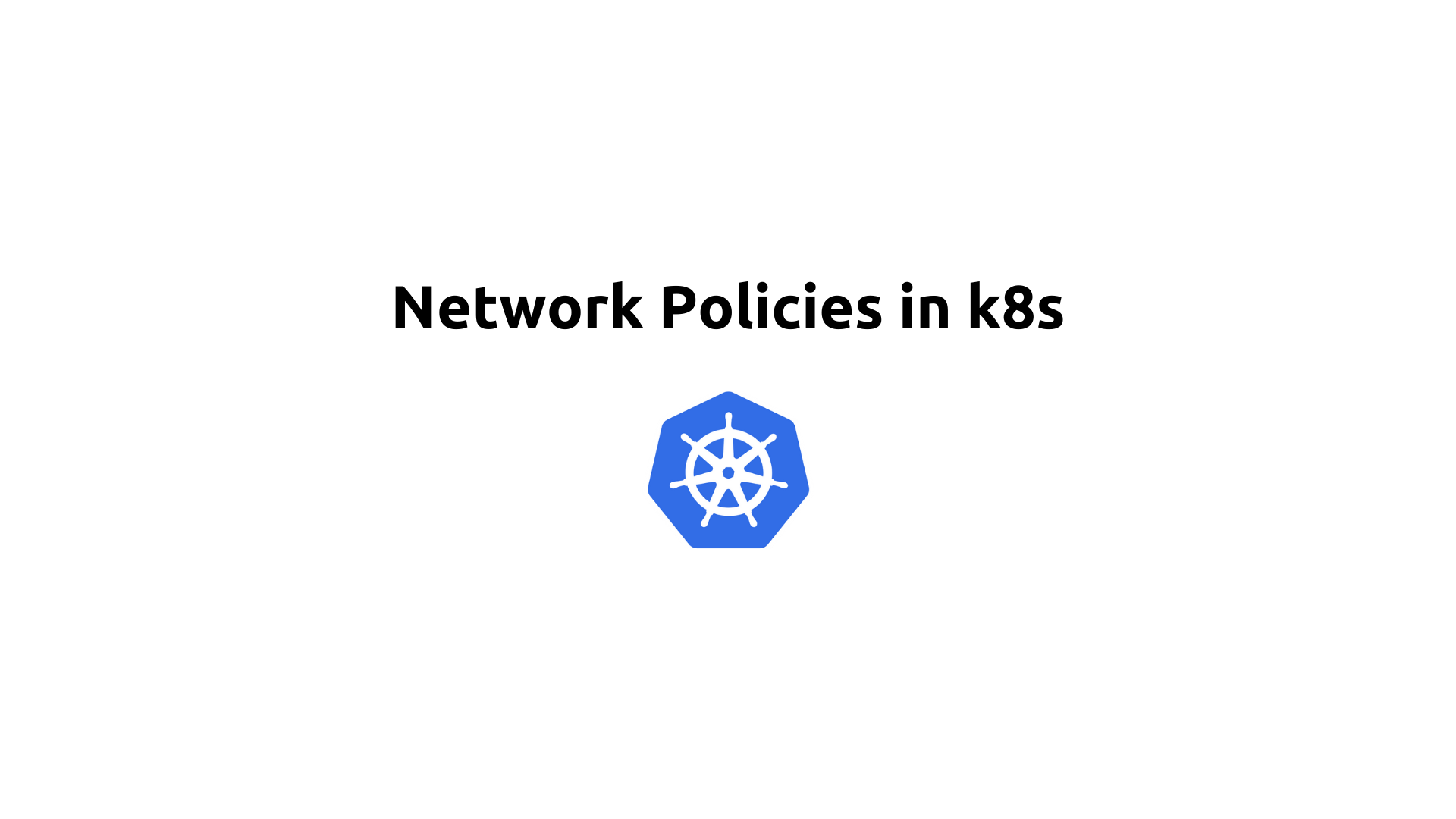Network Policies in k8s
 Saurabh Adhau
Saurabh Adhau
Introduction
Network Policies in Kubernetes are crucial for securing and managing network traffic within a cluster. They allow administrators to define rules that control traffic flow to and from pods, providing a way to enforce network segmentation and isolation.
Key Concepts of Network Policies
Network Policy Resource
Selectors
Ingress and Egress Rules
Network Plugins
Network Policy Resource
A Network Policy is a Kubernetes resource that defines how groups of pods are allowed to communicate with each other and other network endpoints. Network Policies use selectors to specify the target pods and rules to control traffic.
Example of a Simple Network Policy
apiVersion: networking.k8s.io/v1
kind: NetworkPolicy
metadata:
name: allow-frontend
namespace: default
spec:
podSelector:
matchLabels:
role: frontend
policyTypes:
- Ingress
ingress:
- from:
- podSelector:
matchLabels:
role: backend
ports:
- protocol: TCP
port: 80
In this example:
The policy applies to pods with the label
role: frontend.It allows inbound traffic from pods with the label
role: backendon port 80/TCP.
Selectors
Selectors define which pods the Network Policy applies to. There are two main types of selectors:
Pod Selectors: Used to target specific pods within the same namespace.
Namespace Selectors: Used to target pods in other namespaces.
Example of a Pod Selector
podSelector:
matchLabels:
app: my-app
Example of a Namespace Selector
namespaceSelector:
matchLabels:
environment: production
Ingress and Egress Rules
Network Policies can define ingress (incoming) and egress (outgoing) traffic rules.
Ingress Rules
Ingress rules control incoming traffic to the selected pods. They can specify the sources of traffic and the allowed ports and protocols.
Example of an Ingress Rule:
ingress:
- from:
- podSelector:
matchLabels:
role: backend
ports:
- protocol: TCP
port: 80
Egress Rules
Egress rules control outgoing traffic from the selected pods. They can specify the destinations of traffic and the allowed ports and protocols.
Example of an Egress Rule:
egress:
- to:
- ipBlock:
cidr: 10.0.0.0/24
ports:
- protocol: TCP
port: 53
Network Plugins
Network Policies are implemented by network plugins, such as Calico, Cilium, and Weave. Ensure that the chosen network plugin supports Network Policies and is correctly configured in your cluster.
Use Case 1: Isolating Sensitive Applications
Consider a scenario where you have a database pod that should only be accessible by the backend application pods. You can create a Network Policy to enforce this isolation.
apiVersion: networking.k8s.io/v1
kind: NetworkPolicy
metadata:
name: db-isolation
namespace: default
spec:
podSelector:
matchLabels:
role: database
policyTypes:
- Ingress
ingress:
- from:
- podSelector:
matchLabels:
role: backend
ports:
- protocol: TCP
port: 5432
Use Case 2: Restricting Traffic to External Services
You may want to restrict pods in your development environment from accessing external services except for necessary updates. This can be achieved with egress rules.
apiVersion: networking.k8s.io/v1
kind: NetworkPolicy
metadata:
name: restrict-external
namespace: dev
spec:
podSelector:
matchLabels:
environment: dev
policyTypes:
- Egress
egress:
- to:
- ipBlock:
cidr: 192.168.1.0/24
ports:
- protocol: TCP
port: 443
Use Case 3: Enforcing Zero Trust Networking
Implementing zero trust networking involves ensuring that only explicitly allowed communications are permitted. Here’s an example of enforcing such a policy for frontend and backend services.
apiVersion: networking.k8s.io/v1
kind: NetworkPolicy
metadata:
name: zero-trust
namespace: default
spec:
podSelector:
matchLabels:
role: frontend
policyTypes:
- Ingress
- Egress
ingress:
- from:
- podSelector:
matchLabels:
role: backend
ports:
- protocol: TCP
port: 80
egress:
- to:
- podSelector:
matchLabels:
role: backend
ports:
- protocol: TCP
port: 80
Benefits of Network Policies
Enhanced Security: By defining strict rules for traffic flow, you reduce the attack surface and protect sensitive data.
Improved Compliance: Network policies help in meeting regulatory requirements by enforcing network segmentation and access controls.
Microservices Management: Simplifies the management of microservices by defining clear communication rules between services.
Conclusion
Network Policies in Kubernetes are a powerful tool for managing and securing network traffic within a cluster. By leveraging selectors, ingress, and egress rules, administrators can enforce fine-grained access controls, ensuring that only authorized traffic flows between pods. This not only enhances the security posture of the cluster but also aids in compliance and effective management of microservices. Whether isolating sensitive applications, restricting access to external services, or implementing zero trust networking, Network Policies provide the necessary framework to achieve these goals.
Subscribe to my newsletter
Read articles from Saurabh Adhau directly inside your inbox. Subscribe to the newsletter, and don't miss out.
Written by

Saurabh Adhau
Saurabh Adhau
As a DevOps Engineer, I thrive in the cloud and command a vast arsenal of tools and technologies: ☁️ AWS and Azure Cloud: Where the sky is the limit, I ensure applications soar. 🔨 DevOps Toolbelt: Git, GitHub, GitLab – I master them all for smooth development workflows. 🧱 Infrastructure as Code: Terraform and Ansible sculpt infrastructure like a masterpiece. 🐳 Containerization: With Docker, I package applications for effortless deployment. 🚀 Orchestration: Kubernetes conducts my application symphonies. 🌐 Web Servers: Nginx and Apache, my trusted gatekeepers of the web.